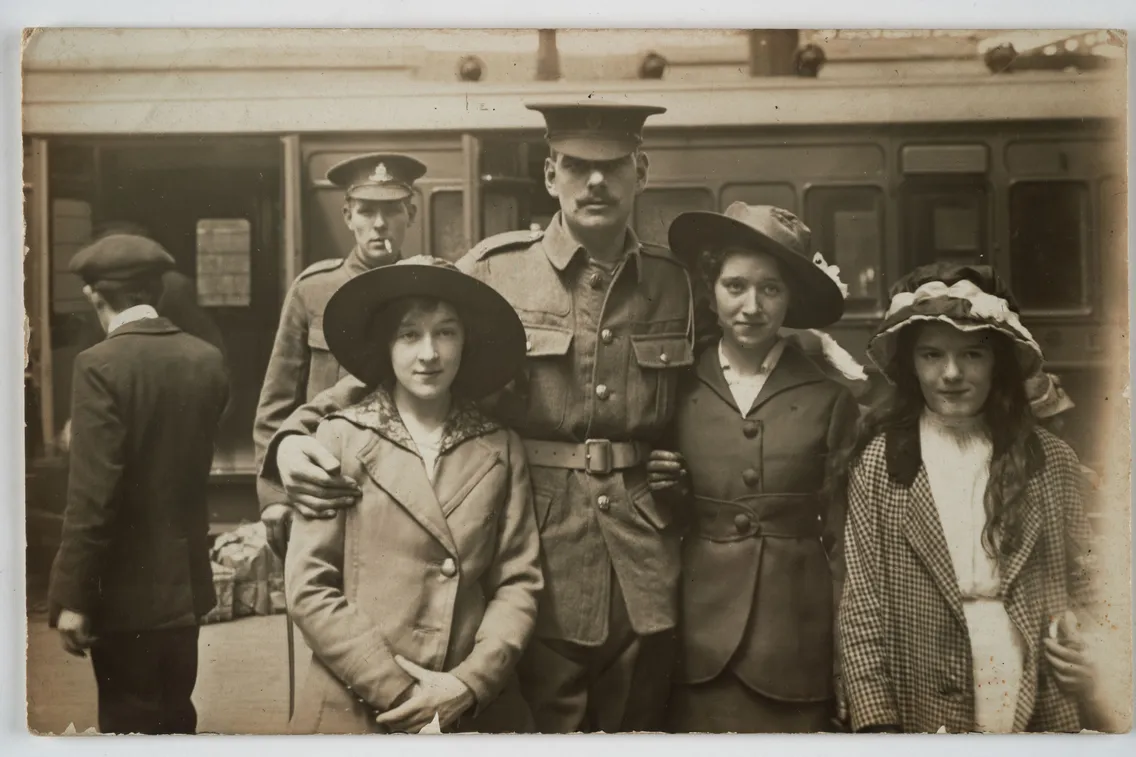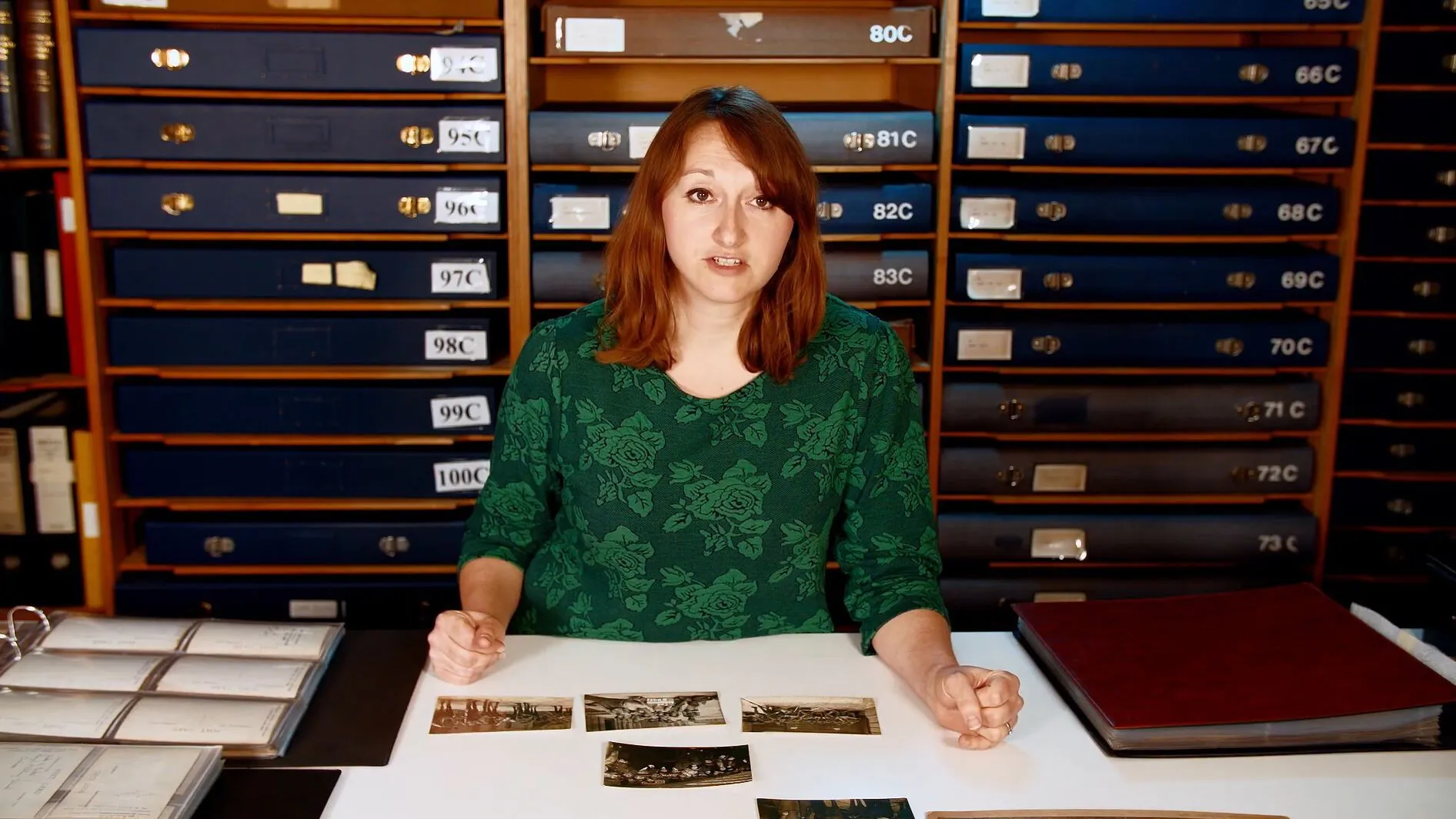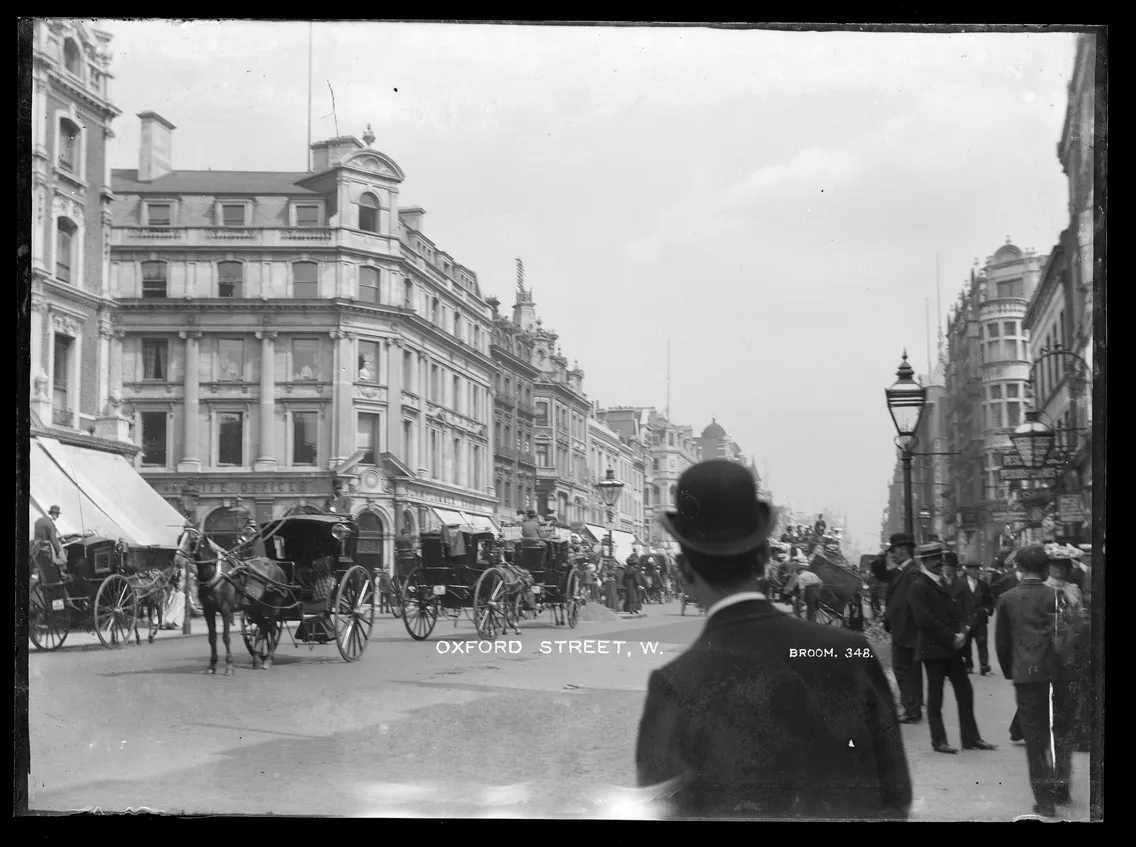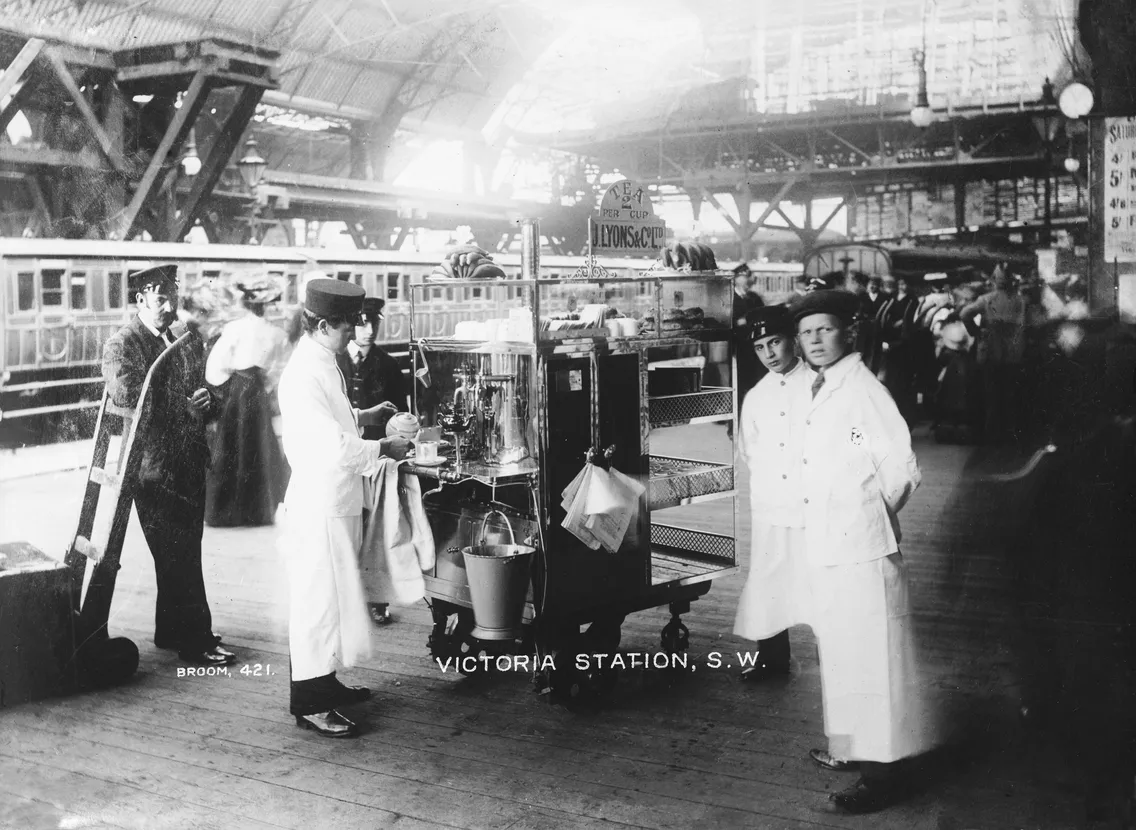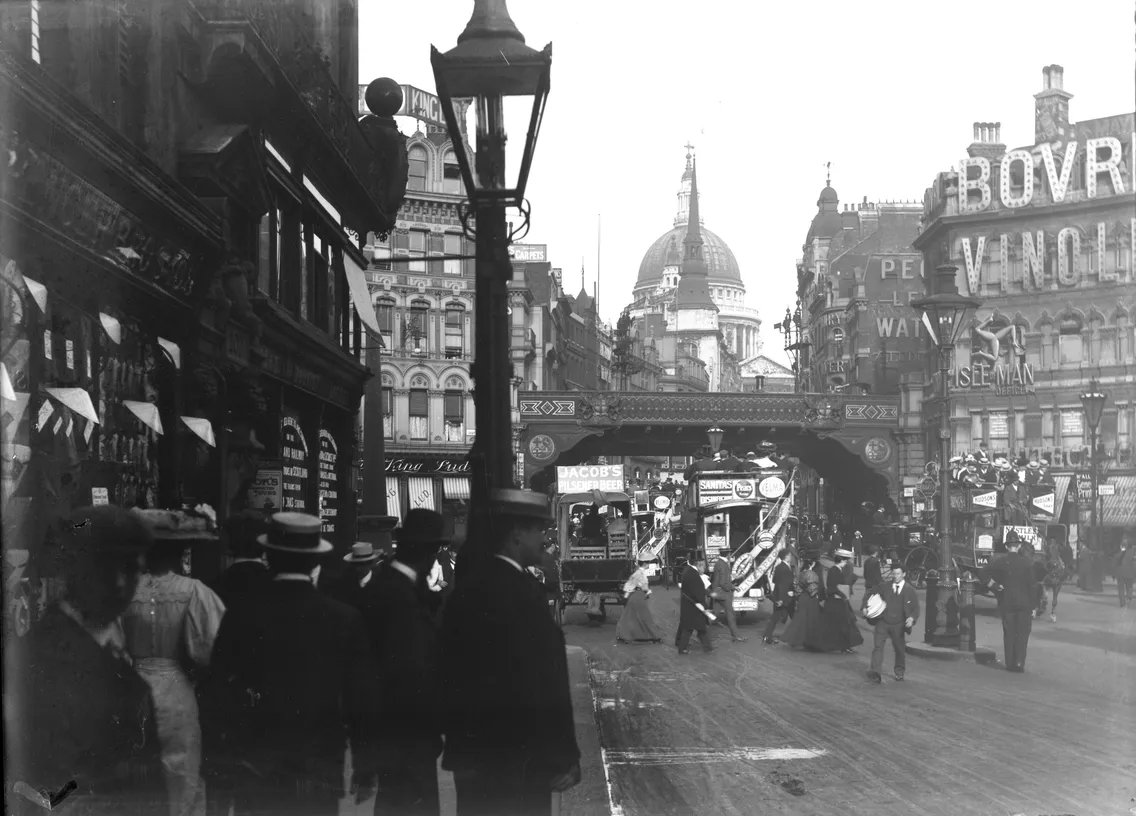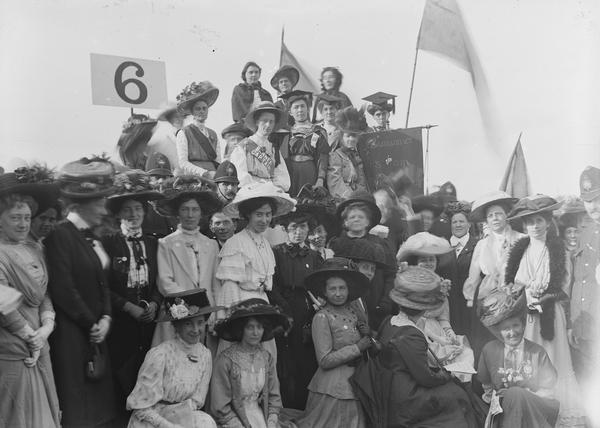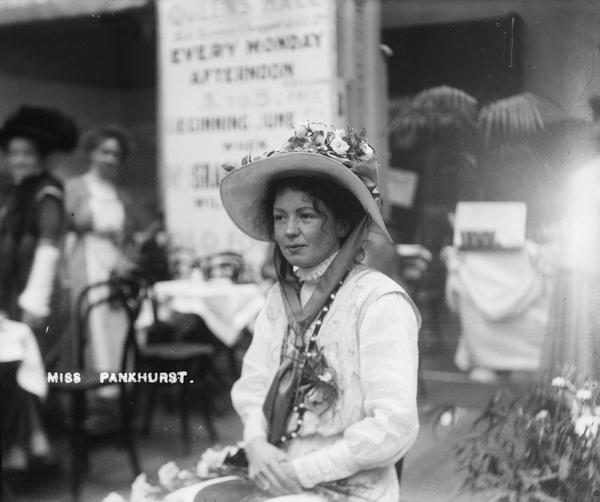An introduction to Christina Broom
Christina Broom was a photographer whose pictures of Suffragettes, soldiers and royal occasions offer a glimpse of London from the 1900s to the 1930s.
1862–1939

The first female press photographer
The early 20th century was a good time to pick up a camera.
Christina Broom lived through the First World War, and saw the Suffragette movement on the streets of London. Her photos let us look into the eyes of the people who lived through these events.
You can see the Pankhurst family protesting for women’s right to vote. You can see soldiers leaving for the First World War. And you can see the London streets you know, over a hundred years ago.
Broom is regarded as the first female press photographer, breaking into a trade dominated by men. And thanks to her daughter Winifred, her photos are held in our collection.
How did she become a photographer?
Born Christina Livingstone, Mrs Albert Broom – as she called herself professionally – made a late start as a photographer.
In 1903, at the age of 40, Broom borrowed a plate box camera to photograph the Prince and Princess of Wales opening the new tramways at Westminster.
Inspired by her results, she took a camera to Epsom on Derby Day and photographed the horse which went on to win. Broom realised that photography was a way of earning a living.
That was crucial for Broom. Her husband, Albert, had been injured in a cricket accident, and couldn’t work. Christina stepped up as the main breadwinner, bought a half-plate camera and set out to produce photographic postcards of local scenes.
Helped by living so close to Chelsea Barracks, in 1904 she became official photographer to the Household Division, whose soldiers stand outside Buckingham Palace and Horse Guards. It was a role she kept until her death in 1939.
“The photos are more natural than the serious, patriotic images appearing in newspapers”
Snapping Suffragettes
Between 1908 and the First World War, Broom captured the demonstrations, marches and events of the Suffragette movement through striking photographs. She used these to make postcards, which were sold at Women’s Social and Political Union shops.
Who can you see in Broom’s photos? Some of the most famous figures are there. Emmeline Pankhurst. Christabel and Sylvia Pankhurst. And Emily Davison, the Suffragette who died after being hit by a horse at the Epsom Derby in 1913.
But you also see the regular Suffragettes, and the determined faces of those brave women who marched and went to prison for their right to vote.
War, sport and the royals
Broom’s other work includes photographs of the Cambridge and Oxford boat race, women police volunteers, nurse Edith Cavell’s funeral and Antarctic explorer Ernest Shackleton.
She also built up a reputation which gave her access to royal events. Broom shot a portrait of the Prince of Wales and was the only photographer allowed to see King Edward VII lying in state at his funeral in Westminster Abbey.
In her role with the Household Division, Broom photographed soldiers mobilising for the First World War, and the returning injured.
The photos are more natural than the serious, patriotic images appearing in newspapers. Some of the most meaningful images show the nervous faces of soldiers and their loved ones as the troops leave from Waterloo Station to head to war.
How does London Museum have the photos?
Winifred Broom was her mother’s only assistant, producing thousands of prints for the business. After Christina’s death, Winifred met Queen Mary, who suggested that the original works should be preserved in museum collections. Several institutions, including London Museum, were given Broom’s original glass negatives. And in 2013, we gathered the remaining prints which had belonged to Winnie.


